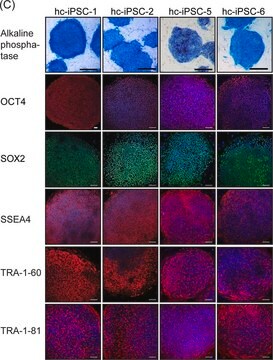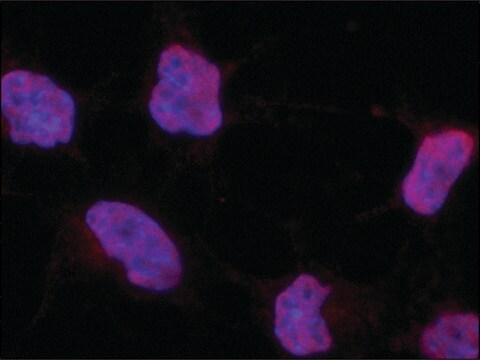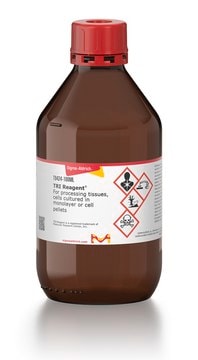MAB4401
Anti-Oct-4 Antibody, clone 10H11.2
clone 10H11.2, Chemicon®, from mouse
Synonym(s):
Octamer-binding transcription factor 3, POU class 5 homeobox 1, POU domain class 5, transcription factor 1, POU domain, class 5, transcription factor 1, POU-type homeodomain-containing DNA-binding protein, octamer-binding transcription factor-3
About This Item
Recommended Products
biological source
mouse
antibody form
purified antibody
clone
10H11.2, monoclonal
species reactivity
human
manufacturer/tradename
Chemicon®
technique(s)
ELISA: suitable
flow cytometry: suitable
immunocytochemistry: suitable
western blot: suitable
input
sample type induced pluripotent stem cell(s)
sample type: human embryonic stem cell(s)
isotype
IgG1
NCBI accession no.
UniProt accession no.
shipped in
wet ice
target post-translational modification
unmodified
Gene Information
human ... POU5F1(5460)
General description
Specificity
Application
ELISA: A previous lot of this antibody was used in ELISA.
Immunocytochemistry: A previous lot of this antibody was used in IC. H9 cells in culture on a mouse embronic fibroblast feeder layer were labeled by a standard indirect IF protocol. Oct-4 labelling in green, DAPI in blue, & SSEA-3 (MAB4303 in red).
Optimal working dilutions must be determined by the end user.
Quality
Western Blotting: 1:500 dilution of this antibody detected Oct-4 on 10 µg of mouse P1 brain lysates
Target description
Physical form
Analysis Note
Human embryonic stem cell lysate.
Other Notes
Legal Information
recommended
Storage Class Code
12 - Non Combustible Liquids
WGK
WGK 2
Flash Point(C)
Not applicable
Certificates of Analysis (COA)
Search for Certificates of Analysis (COA) by entering the products Lot/Batch Number. Lot and Batch Numbers can be found on a product’s label following the words ‘Lot’ or ‘Batch’.
Already Own This Product?
Find documentation for the products that you have recently purchased in the Document Library.
Articles
Skip weekend feedings. Defined serum-free and feeder-free expansion media for human pluripotent stem cells (ES and iPS cells). See publications and protocols.
Fibroblast growth factors (FGFs) are secreted glycoproteins that regulate several fundamental developmental pathways and help regulate mesoderm and ectoderm patterning in the early embryonic development.
Human iPSC neural differentiation media and protocols used to generate neural stem cells, neurons and glial cell types.
The Simplicon™ RNA Reprogramming Technology is a next generation reprogramming system that uses a single synthetic, polycistronic self-replicating RNA strand engineered to mimic cellular RNA to generate human iPS cells.
Our team of scientists has experience in all areas of research including Life Science, Material Science, Chemical Synthesis, Chromatography, Analytical and many others.
Contact Technical Service![Anti-OCT-4 [POU5F1] Antibody, clone 7F9.2 clone 7F9.2, from mouse](/deepweb/assets/sigmaaldrich/product/images/307/874/7354f72d-80ee-40a5-b7fa-0590fe6784cc/640/7354f72d-80ee-40a5-b7fa-0590fe6784cc.jpg)








